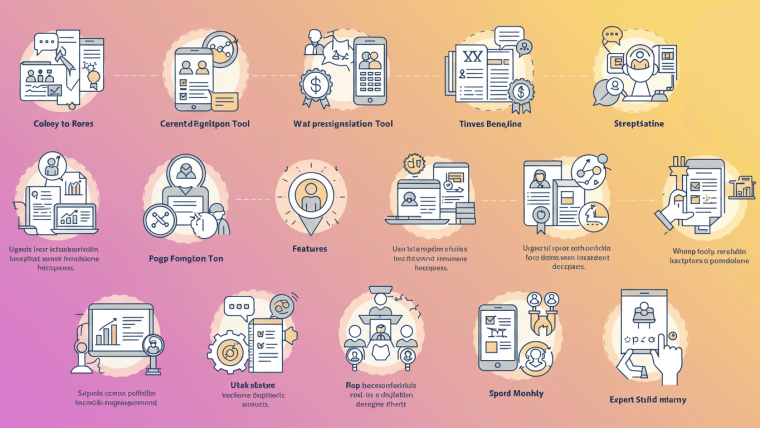Running websites and applications might seem complicated sometimes, but Internet Information Services (IIS) is a tool that simplifies it. Something that developers and IT pros rely on in IIS is virtual directories which give you a great method of organizing your server structure, simplifying your deployments, and managing resources.
This article provides an explanation of IIS and virtual directories, a summary of prerequisites, a stepwise guide, some security considerations, and best practices to help you navigate this process. At the end you will know everything about creating and configuring virtual directory in IIS.
Introduction to IIS and Virtual Directories
What is IIS?
Microsoft Internet Information Services (IIS) is a potent web server that can be utilized to host websites, applications, and services on a server. This powerful tool has become popular with IT Pros, system administrators, and developers for its speed, scalability, and flexibility coupled with Windows system integration.
What are virtual directories?
Virtual directories in IIS are logical mappings that point to a physical folder of a server/network. They enable serving content from outside your default site folder without needing to move files around. This part of the feature is largely around grouping things that multiple applications can share, such as images, assets or codebases. For example, while your main website might be in C:\inetpub\wwwroot, a virtual directory can map a folder like D:\shared-assets into your web structure.
When used correctly, virtual directories streamline resource management and can help improve server organization and efficiency.
Prerequisites for Creating a Virtual Directory
Before you get started, ensure the following prerequisites are in place:
- IIS Installation
IIS must be installed on your Windows server. To check, open the “Turn Windows Features On or Off” menu and ensure “Internet Information Services” is enabled.
- Administrator Privileges
You need administrative rights on the server to create and manage virtual directories.
- A Folder Path
Identify the physical folder on your server or network that contains the resources you want to serve through the virtual directory.
- Basic Understanding of IIS Manager
While this guide is beginner-friendly, familiarity with navigating IIS Manager will be helpful.
Step-by-Step Guide to Creating a Virtual Directory
Follow these steps to set up a virtual directory in IIS:
Step 1: Open IIS Manager
- Launch IIS Manager by typing inetmgr in the Windows Run dialog box (Win + R) and pressing Enter.
Step 2: Select Your Website
- Under the Connections pane on the left, expand your server node and select the site to which you want to add a virtual directory.
Step 3: Add a Virtual Directory
- Right-click on the website name and select Add Virtual Directory…
- A dialog box will appear. Fill in the following fields:
- Alias: This is the name users will use to access your virtual directory (e.g., “images” or “shared-assets”).
- Physical Path: Use the Browse button to select the folder containing the resources.
Step 4: Complete the Setup
- Click OK to create your virtual directory. You’ll see it listed under your website in IIS Manager.
At this point, your virtual directory is created, but there’s more to configure to ensure optimal functionality and security.
Configuring Permissions and Security Settings
Step 1: Modify Folder Permissions
- Navigate to the physical folder’s location.
- Right-click on the folder, go to Properties, and then switch to the Security tab.
- Ensure that the necessary user accounts, such as IIS_IUSRS, have at least Read permissions (or Write permissions for scenarios allowing uploads).
Step 2: Authentication and Authorization
- Back in IIS Manager, click on your newly created virtual directory.
- Under the Features View, click Authentication. Enable and configure appropriate authentication methods (e.g., Windows Authentication, Basic Authentication).
- Next, use the Authorization Rules module to restrict or grant access based on user roles or groups.
Step 3: Enable Directory Browsing (Optional)
- If you want users to view folder contents in their browser, enable Directory Browsing under Features View. However, this is generally discouraged for security reasons unless explicitly required.
Best Practices for Managing Virtual Directories
- Use Clear Aliases
Choose intuitive aliases to make your directory structure easier to understand for developers and team members.
- Keep Permissions Tight
Only grant permissions necessary for the virtual directory’s function (e.g., avoid giving write access unnecessarily).
- Leverage HTTPS
Always serve your virtual directory through HTTPS to ensure the security of data in transit.
- Organize Shared Resources
Group shared assets (e.g., images or scripts) logically to prevent overlap or redundancy across projects.
- Document Your Setup
Always document the virtual directories created, including their aliases, physical paths, and permissions, to simplify management and audits later.
Troubleshooting Common Issues
Here are some common challenges and tips on resolving them:
- “403 Forbidden” Error
Ensure IIS_IUSRS has the correct read permissions for the folder. Check file-level and folder-level permissions.
- “Virtual Directory Not Found”
Verify that the alias matches what you’re trying to access in the browser and that the physical path hasn’t been moved or deleted.
- Directory Browsing Disabled
If you want to list folder contents, enable the Directory Browsing feature in IIS.
- Authentication Errors
Confirm that the IIS authentication settings allow your site’s users (or domain users) to access the virtual directory.
Take Full Control of Your IIS Virtual Directories
There are lots of configuration options available for creating virtual directory in IIS. This will help you ensure you to remain optimized access of resources, a clean, maintainable, organized server filesystem, and a strong foundation for agile web application development as per the steps mentioned above and best practices.
Regardless if you’re running a small site with shared assets or enterprise-level application, any web developer or system admin working with IIS needs to be aware of virtual directories.
For more in-depth guides on IIS management and advanced configurations, explore Microsoft’s official IIS documentation.








Webinar Analytics: A Complete Guide to Measuring Success and Improving Performance
The Ultimate Webinar Follow-Up Strategy to Turn Attendees into Customers
Webinar Accessibility Best Practices: How to Make Your Online Events Inclusive for All
Webinar Personalization: Tailoring Content to Audience Segments for Maximum Engagement